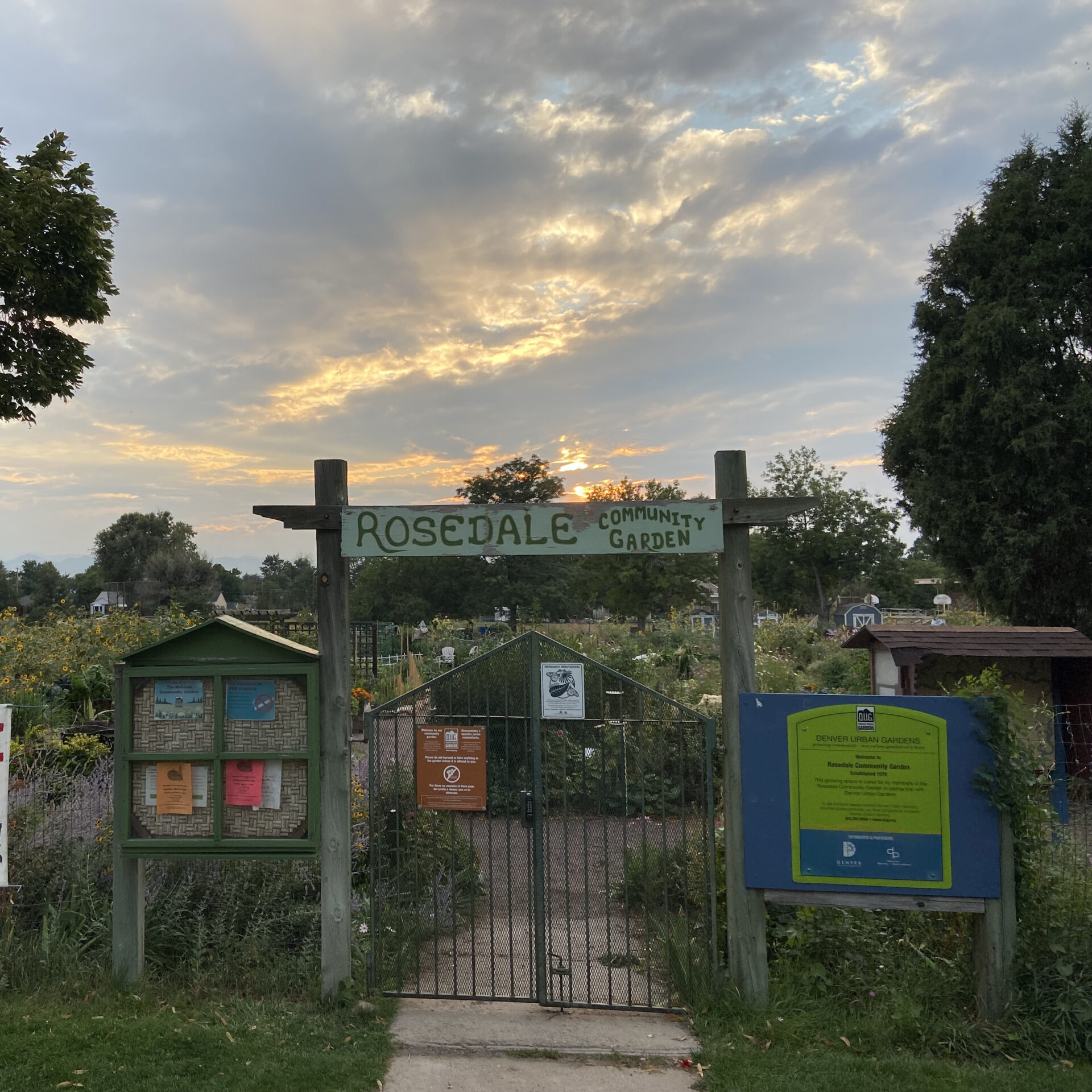HISTORY
Rosedale Garden was founded in 1976. Rosedale is the second largest Denver Urban Gardens Member at 3 acres and 100 full size plots.
ORGANIC
Rosedale is an organic community garden. Please leave your dogs outside the fence so they don’t add any extra “fertilizer” to our garden!
ABOUT
Rosedale is located adjacent to Harvard Gulch Park near the intersection of Iliff and Logan.

Work collaboratively with a diversity of people for the benefit of the community garden
Use only organic growing methods–no pesticides or herbicides
Tend your plot and maintain pathways around it
Complete your community garden’s required service hours (varies by garden)
Stay on-site while watering to avoid water waste (timers may not be used)
Be kind to your fellow gardeners and the earth
ROSEDALE GALLERY

Use this code for all payments/donations to Rosedale including flower bouquets, straw, etc.